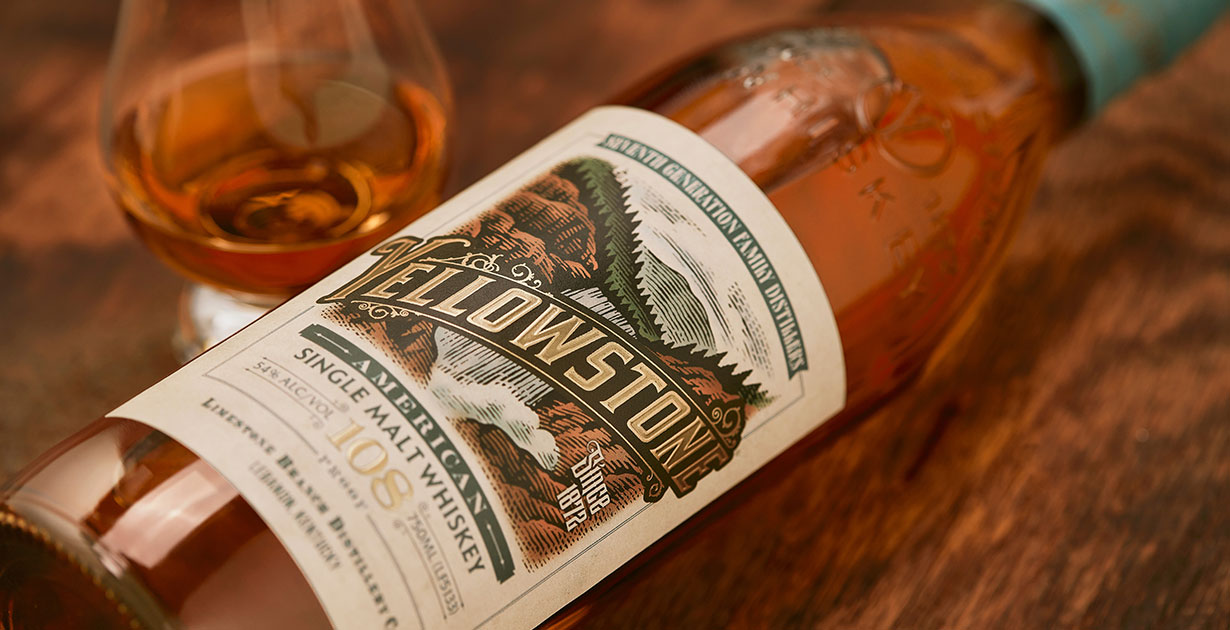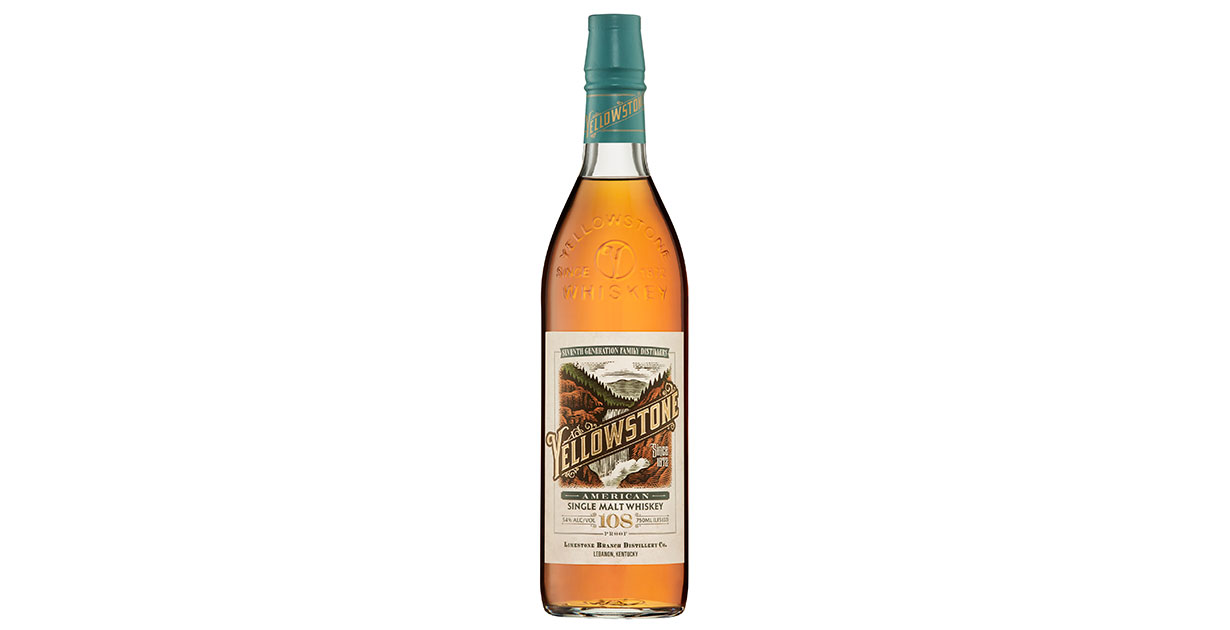


Full disclosure, I am a bourbon lover. Those sweet and lingering caramel and vanilla notes in something like Four Roses are a dream. That being said, I have also been keenly interested in the American single malt category for a long time now, watching developments with eagle eyes. So, when Limestone Branch Distillery announced its Yellowstone American Single Malt in 2023, I was intrigued.
A huge number of distillers across America focus solely on single malts (think Westward Whiskey, Balcones, and Stranahan’s). And yet, here was a brand renowned for its bourbon trying its hand at a new category. Well, more power to them. Thanks to the soon-to-be-enacted legislation from the TTB, the American single malt category is growing, and Limestone Branch clearly wants to bring something to the table. So, why not indulge them?
When I was invited to a tasting masterclass with Managing Director, International at Luxco, Greg Mefford, and seventh-generation distiller Stephen Beam, I jumped at the opportunity. I wanted to hear directly from them what they think this single malt offers to whiskey drinkers.
Why American Single Malt?
Stephen pre-empts what I assume many people were going to ask—why American single malt—saying: “I strive to try and do different things. I like to test myself as a distiller and try different grains.
“American single malt—there was a lot of buzz about it. We knew it was coming, and so we wanted to be a leader, not a follower. So, we got a jump on the gun and started to distill a single malt.”
That “buzz” has been traveling across the U.S. whiskey industry for some time now, as the Distilled Spirits Council of the United States, the American Single Malt Whiskey Commission, and various producers throughout the country lobbied for federal recognition and protection of the category.
Finally, in December 2024, it was announced that the TTB would officially ratify the American Single Malt Whiskey category. The final rule will become effective on January 19, 2025.
The Making of Yellowstone American Single Malt
“We make our single malt exactly like we make our bourbon. The only thing that is different is the mash bill,” explains Stephen Beam.
Yellowstone American Single Malt is made from 100% malted barley. The mash, made from the malted barley, is distilled in a column still and then matured in virgin charred oak barrels with level #4 char on the staves and level #2 char on the cask heads.
After four years of maturation—or what Stephen Beam calls “four Kentucky years” due to the state’s extreme fluctuating temperatures—the whiskey is bottled at 54% ABV.
What Does It Bring to the Table?
Given the well-established categories of single malt scotch and Irish whiskey in Europe—where Greg Mefford and Stephen Beam hope to further promote their American single malt—I wondered: what does American single malt bring to the table?
“One thing that has happened for American whiskey beyond U.S. borders is that American whiskey has established itself as a world whiskey rather than an American whiskey,” says Greg Mefford. “I relate that to the new world wine industry in the ’90s, which is where I started. Now that category is well-established—California, Australia, Chile. You’re not a prominent retailer or restaurateur if you don’t represent these regions on your wine list. I think American whiskey has grown in this way and will continue to grow in this way in Europe.”
In fact, Greg is confident that there is already an appetite for American single malt in Europe, highlighting that it caters to a range of palates, bridging the gap between bourbon and single malt scotch: “We have sampled people across Germany and the UK, and I think what American single malt allows us to do is, for those that say, ‘I can’t drink corn whiskey, I can’t get into American whiskey, I’m a scotch guy’—this is an interesting hybrid. And vice versa. It provides an interesting ‘middle-of-the-road’ for a whiskey palate.”
As you can see in my review above, I am very much in agreement here. This whiskey drinks like a cross between bourbon and single malt scotch. It has notes that I would typically associate with bourbon that are tempered by the malty, grain-forward character and the stone fruit notes.


Stephen Beam, who is particularly passionate about the differences in climate across U.S. whiskey regions, also points out that there is variation yet to be seen:
“Given the different climates throughout the country, and the different grains—distillers are experimenting with different varieties of malt—I think that we will have a great variety to deliver. Especially for whiskey geeks who are interested in trying different terroirs from around the world.”
Thanks to my UK roots, I liken this to the whisky regions of Scotland, each of which has its own distinct regional profile. Like smoke? Try Islay. Looking for something rich and fruity? Speyside is the way. Could we eventually see these kinds of regional profiles emerge within American single malt whiskey?
The Future of Yellowstone American Single Malt
The ratification of the American single malt category by the TTB is far from the end of the road for distillers and producers. In fact, this milestone marks the beginning of a new era of exploration and expansion. Now, with official legislation in place, American single malt producers can begin educating consumers—both domestically and internationally—about what they can (and should) expect from American single malt.
As Greg Mefford puts it: “We have got to get people over the idea that a single malt cannot be done anywhere other than Northern Europe.”
The truth is that single malt whiskey can be produced anywhere. What matters is how a country or region establishes itself in the eyes of the public.
The TTB legislation defines the parameters for what American single malt can be. However, it also leaves plenty of room for experimentation—and, therefore, plenty of room for distillers to show consumers what they can do with yeast, barley, and water.
For example, the TTB legislation states that American single malt must be:
“Stored in used, charred new, or uncharred new oak barrels, with a 700-liter maximum capacity and only stored in the United States.”
As such, distillers have far more freedom with cask types than bourbon producers do.
This is something that excites Stephen Beam, now that Yellowstone has, as he puts it, “got [its] foot in the door.”
“There are a lot of larger distilleries that are experimenting with peat smoke. There is the American smoke—think mesquite and cherry wood smoke. This gives a lot of depth to the category.
“And I look forward to playing with this now that we are up and running—maybe experimenting with some cask finishes. But we had to get our foot in the door, and I am quite happy with where we are.”







